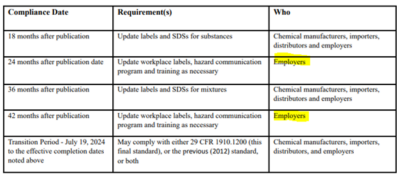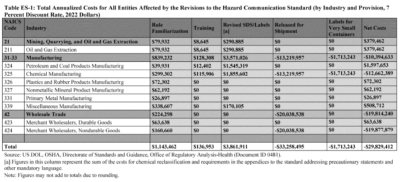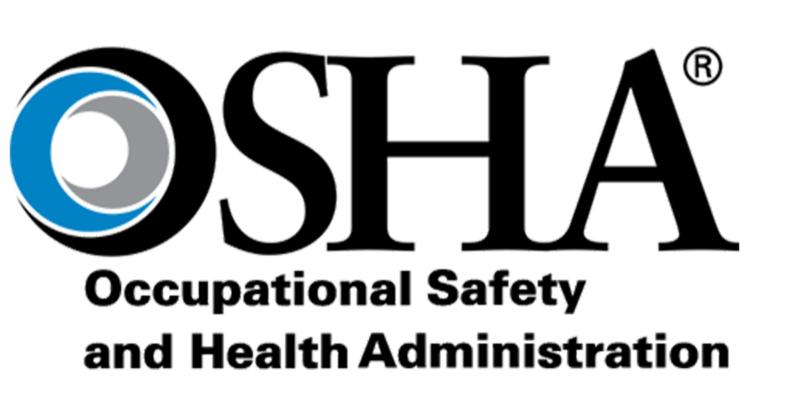
The Globally Harmonized System of Classification and Labelling of Chemicals (GHS) has been implemented around the world. In 2012, OSHA revised its Hazard Communication Standard (HCS), 29 CFR 1910.1200, to align with Revision 3 (Rev. 3) of the GHS (77 FR 17574). However, the GHS is updated with improvements and clarifications every two years. This rulemaking amends the HCS primarily to align with Revision 7 (Rev. 7) of the GHS, published in 2017, where appropriate. OSHA is also finalizing updates to address specific issues that have arisen since the 2012 rulemaking and to provide better alignment with other U.S. agencies and international trading partners, while enhancing the effectiveness of the standard. This action is consistent with Executive Order 13563, ‘‘Improving Regulation and Regulatory Review’’ (January 18, 2011), and the Regulatory Flexibility Act (5 U.S.C. 601 et seq.) which require retrospective analysis of rules that may be out-of-date, ineffective, or excessively burdensome. OSHA is required by the Occupational Safety and Health Act of 1970 (OSH Act) (29 U.S.C. 651 et seq.) to assure, as far as possible, safe and
healthful working conditions for workers. As part of this effort, OSHA first promulgated the HCS in 1983 to provide a standardized approach to workplace hazard communication associated with exposure to hazardous chemicals.
The HCS requires chemical manufacturers or importers to classify the hazards of chemicals they produce or import. It also requires all employers to provide information to their employees about the hazardous chemicals to which they are exposed, by means of a hazard communication program, labels and other forms of warning, safety data sheets (SDSs), and information and training. This final rule does not change the fundamental structure of the HCS. OSHA has determined that the amendments to the HCS contained in this final rule enhance the effectiveness of the standard by ensuring that employees are appropriately apprised of the chemical hazards to which they may be exposed. The modifications to the standard include revised criteria for classification of certain health and physical hazards to better capture and communicate the hazards to downstream users; revised provisions for labels (including provisions addressing the labeling of small containers and the relabeling of chemicals that have been released for shipment); amendments related to the contents of SDSs; and new provisions relating to concentrations or concentration ranges being claimed as trade secrets.
Additionally, in accordance with Executive Orders 12866 and 13563, the Regulatory Flexibility Act, and the Unfunded Mandates Reform Act (2 U.S.C. 1501 et seq.), OSHA has prepared a Final Economic Analysis (FEA), including a Final Regulatory Flexibility Analysis Certification, for the final modifications to the HCS (see the full FEA in Section VI of this notice). Supporting materials prepared by OSHA, such as cost-estimate spreadsheets, are available in the public docket for this rulemaking, Docket ID OSHA–2019–0001, through www.regulations.gov. In the FEA, OSHA estimates that, annualized at a 7 percent discount rate, the final rule would result in net cost savings of $29.8 million per year, as shown in Table ES–1 below (a summary of annualized costs by affected industry). Annualized at a 3 percent discount rate, OSHA estimates that the final rule would result in net cost savings of $30.7 million per year. OSHA also expects that the final revisions to the HCS will result in modest improvements in worker health and safety above those already being achieved under the current HCS, but the agency was unable to quantify the magnitude of these health and safety benefits (see Section VI.D: Health and Safety Benefits and Unquantified Positive Economic Effects).



